






















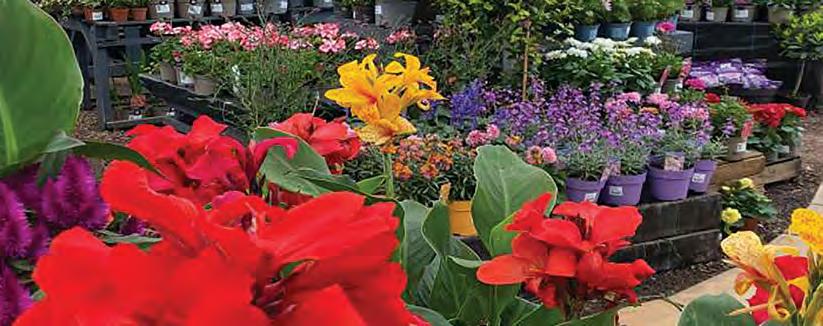
Welcome to the October issue of Garden Centre Retail. As the leaves begin to turn and garden centres shift into autumn mode, October brings with it a renewed focus on roots-both literal and figurative. In this issue, we’re celebrating the strength of British horticulture, the people driving it forward, and the businesses that continue to shape the sector.
Our “Buy British” feature explores the growing appetite for locally sourced plants, products, and partnerships. With sustainability and provenance more important than ever, we look at how garden centres are championing British growers and suppliers - and why that matters to customers.
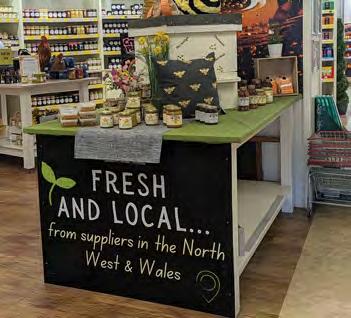


We also sit down with Dan Lawton, whose career in garden retail has been anything but conventional. From bold ideas to lessons learnt, Dan shares his journey and what he believes the sector needs next.
And finally, we’re proud to unveil the GCR100, our definitive list of the most influential people in garden centre retail. It’s a celebration of leadership, innovation, and impact, and we hope it sparks conversations across the industry.
Whether you’re planning for peak season or reflecting on the year so far, this issue is packed with insight, inspiration, and a few surprises. Enjoy the read.

Eljays44 Ltd
BizSpace, Courtwick Lane, Littlehampton, West Sussex, BN17 7TL
EDITORIAL
Head of content – Joe Wilkinson joe.wilkinson@eljays44.com Tel: 01903 777 587
Graphic Designer – Louise Klose louise.klose@eljays44.com
Content subeditor – Carmel Mary carmel.mary@eljays44.com
ADVERTISING
Commercial director – Luke Chaplin Luke.chaplin@eljays44.com Tel: 01903 777 580
MANAGEMENT
Managing director – Jamie Wilkinson
CIRCULATION
Subscription enquiries info@eljays44.com Tel: 01903 777 570
Printed by Stephens and George Ltd
Published by ©Eljays44 Ltd
Garden Centre Retail is published by Inspire44 Ltd.
The 2025 subscription price is £125. Subscription records are maintained at Eljays44 Ltd, Orchard Street Business Centre, 13 Orchard, Street, Bristol, BS1 5EH . Articles and information contained in this publication are the copyright of Eljays44 Ltd and may not be reproduced in any form without the written permission of the publishers. The publishers cannot accept responsibility for loss of, or damage to, non-commissioned photographs or manuscripts.
Whilst every effort has been made to maintain the integrity of our advertisers, we accept no responsibility for any problem, complaints, or subsequent litigation arising from readers’ responses to advertisements in the magazine. We also wish to emphasise that views expressed by editorial contributors are not necessarily those of the publishers. Reproduction of any part of this magazine is strictly forbidden.
Garden Centre Retail


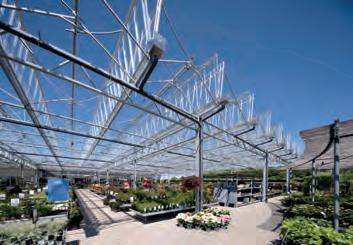
Founded as a family business in South Tyrol, Italy, we are now one of Europe’s
Our portfolio:
• State-of-the-art garden centres of all sizes
• Eye-catching façades
• Stylish cafés and restaurants in glasshouse settings
• High-quality convertible roofs
Curious to learn more about our approach and services? Visit www.rabensteiner.eu.








07
08
Catering and the garden centre restaurant
Garden Centre Association chief executive Peter Burks share his views on catering in the garden retail sector, and showcases the performance of the garden centres in this category.
The awards that help shape the industry
With the 2025 annual GIMA Awards just around the corner, we hear from last year’s finalists about what earning one of the most coveted prizes has done for their business.

10
13
15
Pleydell Smithyman’s associate director Andrew Burton talks preparation.

Why Expert Advice Matters
An interview with Dan Lawton
Moss & Moor’s Dan Lawton has recently become an executive board member at the GCA. We catch up with Dan about his career.
Beth French, account director at the home and garden agency and Specialist PR Consultancy of the Year, Honest Communications, digs into why expert advice is a powerful PR tool brands should be leveraging. 21
18 The GCR100
An announcement of the top influencers in the UK garden centre sector.
21 Buying British
Industry Expert Cassie King speaks with the industry about why buying British isn’t just about ticking a box - it’s becoming a key part of the business strategy.
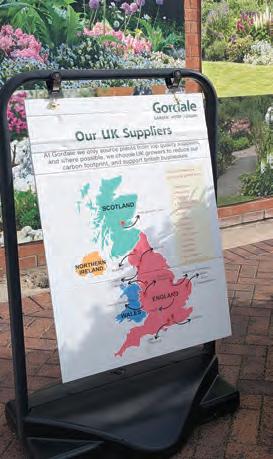
25
Plants for January Colour
Garden Centre takes a look at the best plants to stock for those customers looking for a pop of January colour in their garden.

25


Our ingredients are responsibly & locally sourced, and chosen not just for its purity, but for its proven benefits to both skin and planet.
Your key to achieving radiant, silky soft, healthy skin within minutes!
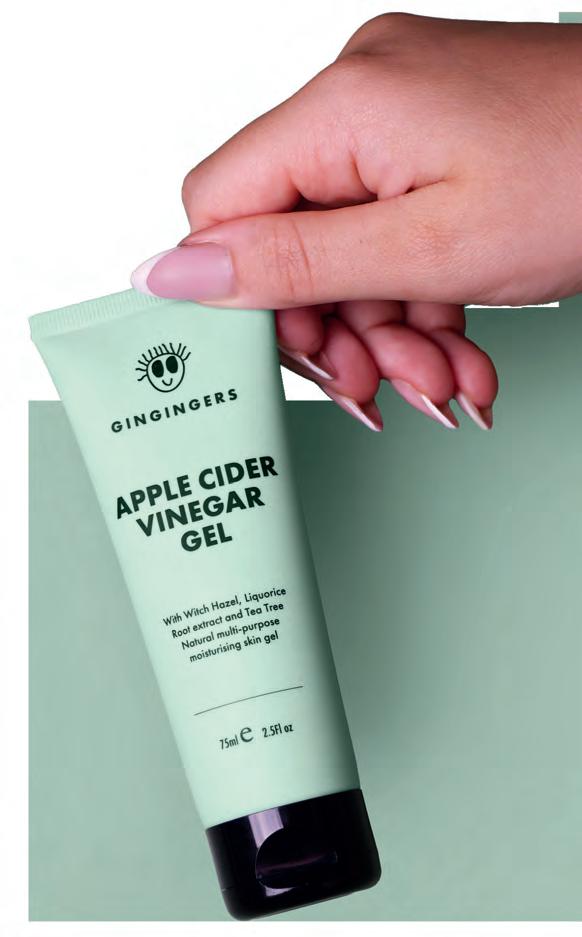


Garden
Peter Burks shares his views on catering in the garden retail sector, and showcases the performance of the garden centres in this category.
We are hearing regularly that retailing in this country is struggling, with the British Independent Retail Association reporting 47% of its members are suggesting we are in ‘torrid trading conditions’.
We know that the increases in national minimum wage, national insurance and business rates, plus the soft approach to thieves are creating a lot of these issues. Further concerns about what will be in the forthcoming budget are only deepening the gloom. So, it is very heartening to see once again how our industry and our Garden Centre Association members are still forging ahead both in terms of sales performance and in further innovation.
In a recent interview with a national newspaper, the interviewer was very reluctant to believe me when I said we were doing well, and he was even more incredulous when I confirmed that we are generally immune to the economic downturns that affect the rest of retail. Our customer base has the ability and the desire to keep maintaining their homes and gardens regardless of the wider economic issues.
The catering offer in Garden Centre Association members’ centres performed well during the big spring gardening peak,
demonstrating that a visit to the restaurant is a must regardless of the actual reason to visit the garden centre. Then, as the hot weather has hit summer gardening the other categories such as catering, food halls and farm shops, gifts and clothing have kicked in to support the total sales.
In July, figures submitted to our GCA Barometer of Trade, show catering grew by 8.32% compared to July 2024 and is up by 8.51% for the year to date compared to the same period in 2024.
Food halls/farm shops were up 6.38% in July and are up 7.64% year to date. The gift section, which in our figures would include ambient gift food if the garden centre does not have an actual food hall or farm shop, is up 9.8% in July and 8.31% for the year to date.
Finally, the other ‘adverse weather’ category, as I like to call them, being clothing, saw an 11.76% increase in July and is currently 4.96% up year to date.
So how can we ensure that we keep moving forward and buck the negative trend that other catering operations are suffering. Firstly, get out there and see what the best are doing both in terms of innovation to help with customer service whilst also having an eye on wage cost control, and on the quality and range on offer.
Our top-scoring restaurants in the 2024 annual inspections included Bents, Ruxley Manor, Haskins Snowhill and Perrywood Tiptree in the Destination Garden centre category.
Thetford topped the Garden Centre category scoring with Fron Goch, Klondyke Byrkley Park and Meadowcoft close behind.
Then in the Local Garden Centre category, Rutland Nurseries and Klondyke Howdens led the way.
All great businesses have a clear idea of what they are doing and execute it superbly.
About Peter Burks
Peter Burks, CEO of the Garden Centre Association,is a fullyTrained horticulturalist and has worked in directorial and management roles for over 40 years. Peter helped set up and run the multi-award-winning Sanders Garden World in Somerset. He also became regional manager of the South West for Wyevale Garden Centres, and general manager for Trelawney’s in Cornwall, and managing Fermoy’s Garden Centre in Devon. gca.org.uk


With the 2025 annual GIMA Awards just around the corner, we hear from last year’s finalists about what earning one of the most coveted prizes has done for their business.
As the industry gears up for another splendid evening of networking, celebrating and prize giving in November, we look back at some of the outstanding winners from 2024, hearing their stories and what the months following their win have held.
The Sipcam team had plenty of cause for celebration at last year’s awards, as they won the prestigious Sword of Excellence for a second consecutive year, ‘wowing’ judges with ecofective Slug Stoppa. The game-changing pest control product also landed Gold in the Garden Care category, giving Sipcam a double win. Marketing manager Lydia Grayston, says: “The GIMA Awards win was amazing for us. We feel so privileged to have won the Sword of Excellence for a second year in a row. The recognition has really helped raise the profile of our young(ish) business. We’ve promoted the win across email signatures, corporate presentations, our website etc., and the media coverage has been fantastic. The reach has been superb, and it’s given our eco-effective brand a real boost.”
Meanwhile, Westland Horticulture had an extremely successful event last year, taking home four awards on the night, including Supplier of the Year, whilst also being named a finalist in three other categories. In addition,
the company earned Highly Commended in the Sword of Excellence category for its Kent & Stowe SureCut Cutting Range. Category director Simon McArdle, comments: “Winning such a variety of GIMA awards this year felt like an incredible achievement for Westland and a real recognition of the passion, innovation, and teamwork that drives our business. It validated the effort we put into developing products, crafting marketing communications, and ensuring we meet supplier demands. The wins have energised our teams and reinforced our commitment to pushing boundaries in quality, sustainability, and design.”
Westland can attest that the GIMA Awards celebrate innovation across a wide range of products. Simon explains: “To be awarded for our marketing communications was a real boost. We truly feel that buying decisions are about more than just products, they are about stories and how our brands emotionally connect with consumers. We’ve worked incredibly hard to ensure our advertising reaches the right audiences, at the right time, and continually drive category growth and participation. To have won both the Best Multi-Channel Marketing campaign for Colour in Your Garden and the Best Social Media campaign for Westland Beneath the Leaf was really motivating for our teams.”

An important addition to the event in recent years has been the naming of a Sustainability Champion within all relevant categories, as well as the recognition of an overall Sustainability Champion across the board. With sustainability climbing higher on the consumer agenda and the need for both suppliers and retailers to take the environment into greater consideration when it comes to their supply chain, this accolade and acknowledgement is more relevant than ever. Primeur’s Tierra Verde Coloured Collection
Primeur secured the top spot in Decorative Garden for its Tierre Verde Coloured Collection to great acclaim. The multi-award-winning planters also earned the HTA-sponsored Sustainability Award on the night. Managing director Jenny Douthwaite, says: “We were delighted. It’s always such an honour to take home a GIMA Award and garner the recognition of our peers because it gives a nod to all of our hard work and also reinforces that we are on the right track, which is a lovely feeling. Winning the Sustainability Award this year was particularly poignant, as it is a message that is so close to our heart as a business and influences all that we do. We are extremely proud of the Tierra Verde range, as we want consumers to be able to make more eco-friendly choices without compromising on style.”
The awards provide a great platform for suppliers, recognising hard work and innovation, whilst raising awareness of new products and campaigns. This reach is priceless for smaller companies or new entrants to the sector who might not otherwise have an opportunity to get their range or business in front of such a high- calibre audience. For retailers looking to enhance their offer, it’s particularly handy to review a list of companies and products that have been given the GIMA seal of approval.
Altico Garden Products took home the prize for Landscaping Product of the Year for its Natural Slate feature piece, whilst also earning a place as a finalist in two other categories. Commercial director Richard Pyrah, explains what being featured on the night meant to the business: “As a relatively new supplier to garden centres (just three seasons), it was amazing to win. More importantly, being recognised as a credible supplier in such a short time meant a great deal. It gave the whole team a real morale boost. The first three years of trading have been incredibly hard work, so to start seeing recognition for that effort was fantastic.”
Lydia Grayston discusses the boost Sipcam has seen from the awards. “Winning has certainly raised awareness of Slug Stoppa and the ecofective range as a whole. More people are talking about the product, which has helped build trust, visibility, and momentum in the market.” She continues: “Thanks to the win, many buyers were already familiar with our products, and several were keen to list Slug Stoppa even before we’d had the chance to present the full range!”
Even long-established brands, such as Westland, recognise the huge benefits winning a GIMA Award can bring to the business, and – if anything – it can push you to work even harder. Simon McArdle explains: “Winning the GCA Supplier of the Year Award has been a

fantastic endorsement for Westland and a real testament to the hard work of every single member of our team. It’s strengthened our relationships with customers by showcasing our commitment to quality, reliability, and innovation. The recognition has also given our customers extra confidence in working with us, which has helped drive stronger partnerships and commercial growth. Most importantly, it has motivated everyone across the business to keep raising the bar and delivering even more value to the industry.”
Another great thing about the GIMA Awards is that they can provide a steer on future developments and even help shape a future offer or encourage suppliers to venture into new categories. Jenny Douthwaite says of Primeur’s experience: “Following our double win, we made the decision to focus on development in the planter category and bring to market some bigger pots at lower price points. We have also been working on an exciting new unique panel system, which we launched to a great response at Glee.”
When asked for their advice for any suppliers thinking about entering next year, Westland’s Simon McArdle was clear: “Our advice would be simple: enter! The GIMA Awards are a fantastic opportunity to showcase innovation, celebrate success, and gain recognition across the industry. The process of entering encourages you to look at your products and achievements with a fresh perspective, and the exposure, both during and after the awards, can have a real impact on awareness and sales.
Simon added: “Beyond the awards themselves, the event is also a brilliant occasion to network, share ideas, and celebrate the creativity and passion that drives our industry forward.”
Sipcam’s Lydia Grayston echoed his sentiments: “Our advice would be: go for it! Entering is a fantastic opportunity to showcase your products and gain recognition within the industry. Even being shortlisted puts your brand in front of key people, and the event itself is a brilliant chance to connect, celebrate, and build relationships.”
Richard Pyrah added: “We’ve always entered new products into the GIMA Awards. You don’t have to win outright – even being a runner-up is something to be proud of. The awards evening itself is a fantastic, well-run event, very well attended, and a brilliant night for the industry. We wouldn’t want to miss it.
This year’s GIMA Awards will take place on Thursday, November 6 at the Celtic Manor Resort in Newport, Wales.
GIMA is a membership organisation of over 200 companies representing the majority share of suppliers and manufacturers operating within the UK gardening industry, together with an estimated £4billion in annual trade.

GIMA’s goal is to promote the commercial, trading and industrial interests of its UK and EU-based members supplying the UK garden retail industry. Run by a small team of dedicated professionals, and governed by a council of members, GIMA is funded by membership subscriptions and services. The range of services and support provided for members is extensive, offering something for all members, regardless of their size or heritage.
After a busy year, September crept up on me just as I returned from a long-awaited holiday. For a glorious week, my phone stayed off (well… some of the time), my outof-office was firmly on, I enjoyed the sunsets and my toughest decision was whether to have another piece of cake. Spoiler: the answer was always yes.
Then came my “mad” September. One that was full of projects with garden centres across the UK, but also it was full of conferences and trade shows. However, I came back from my holiday, not just refreshed, but recharged— ready to roll up my sleeves and make the next few months really count.
If you work in the garden centre world, you know this feeling. July stocktake completion, followed by a late summer brings a certain shift in the air. Customers are still enjoying their gardens, yet a garden centres managers mind leaps ahead to autumn planting, displaying Halloween and Christmas stock that has dripped in since the summer, and—believe it or not—planning for 2026. Meanwhile, you’re focused on today too, keeping everything thriving through the seasonal transitions. I know this feeling, I’ve been there for many years and in short, it’s exhilarating…but it can also feel like standing at the edge of a lush, colourful, slightly chaotic jungle of to-dos. So, how do you set your priorities in a way that’s both ambitious and realistic?
After more than 30 years of running garden centres and retail outlets, here’s my tried-andtested approach - fresh from a sun-soaked Greek Island, but rooted in the practical realities of a garden centres seasonal trade.
Before getting lost in the day-to-day, take a step back and decide on your overarching aim. What’s the story you want your garden centre to tell this season?
Maybe it’s:
The design and ambience worked really well. But the night before it opened, heavy winds blew the polytunnel roof off. How did we react, we tidied everything up and ran the grotto open to the elements in that first weekend. It then started to snow and I can’t emphasise enough just you how magical it was that day. Sometimes the best ideas are the ones you
Making our centre the most welcoming place in town for Christmas shoppers” or “Creating a winter menu that’s irresistible. didn’t
A clear and defined vision acts like a compass—helping guide every smaller decision you make.
Our industry is ruled by the calendar and weather, but also by emotion. What are people craving right now? The tricky part is that many Christmas plans are already set by spring, so you need to be adaptable. When you’re setting priorities, leave breathing space in the diary for trends, customer feedback, and those unexpected opportunities. It’s about reacting positively to what is in front of you. I specifically remember one Christmas where the team set a Christmas Grotto up in a polytunnel.
plan for.
A giant to-do list can feel as overwhelming as reading an encyclopaedia of plant species. Instead, split tasks into quick wins (lowhanging fruit) and deep roots.
• Quick wins might be refreshing a display or running a short social media push.
Deep roots could be training your team on link selling, revamping the café layout, or refining your loyalty scheme.
Anyone who knows me well knows I like SMART objectives and this is simply doing this. All scales of tasks matter—just plan the time effectively to achieve everything you aim to do.
The best plans are shared plans. Involve your team—especially those on the shop floor who see the challenges and opportunities first-hand. You’ll gain practical insights, foster buy-in, and ensure your plans don’t just sit in a folder—they take root and grow.

Goals aren’t set in stone. In gardening, we prune to encourage growth; in business, it’s the same. If something isn’t working, or a better idea sprouts, adapt. I often wonder how often we accept and are happy with the same results, or challenge ourselves to see if there is something more or better out there. Never accept “That’s how we’ve always done it” especially if something clearly could be improved.
Who can help your plans come to fruition?
You have your plans in place, who can help them come to fruition? You don’t have to grow plans alone. The best results come from collaboration, focus, and knowing where to draw on others expertise. In a garden centre, that means:
• Your Core Team – They know the daily rhythms, the bottlenecks, and the hidden opportunities. Listen to them.
• Suppliers & Growers – They can flag trends, advise on timing, and help you maximise profit through smart purchasing and promotions.
• Industry Peers – Our amazing Associations, and other garden centre management teams can be a source of great tips and shared wisdom.
• Marketing & Design Support – Whether in-house or freelance, someone with a sharp eye for presentation can make your messaging clear and campaigns stand out.
• Local Community Groups – Garden clubs, schools, allotment societies—perfect partners for events and workshops.

• Consultants – Seasoned industry advisors can help you make the right choices, saving you both time and money. Nobody is perfect, but your team can be Running a garden centre is a lot like tending a garden itself. Success rarely comes from one plant alone - it’s about cultivating a healthy ecosystem where every part supports the others. In the words of Meridith Belbin:
Nobody is perfect, but the team can be” and when you draw on the strengths of those around you, your plans don’t just grow—they flourish.
About Andrew Burton
Andrew works for Pleydell Smithyman as an associate director, focusing on garden centre and farm shop advice, with an overarching aim of business strategy and development. He provides site development, and commercial and operational support. He sits on the Farm Retail Association Council, and previously on the Garden Centre Association Board. andrewb@pleydellsmithyman.co.uk
















Beth French, account director at the home and garden agency and Specialist PR Consultancy of the Year, Honest Communications, digs into why expert advice is a powerful PR tool brands should be leveraging.
In a busy marketplace where shoppers are often spoilt for choice, one thing can make all the difference when it comes to being chosen more often: trust. But building trust with consumers can be tricky – it’s earned over time through consistency, credibility, and by genuinely adding value to your audience’s lives. One of the easiest ways to develop that allimportant credibility is through sharing expert advice. When done well, offering helpful, knowledgeable guidance doesn’t just position you as a voice of authority – it also boosts brand awareness, drives traffic to your website, supports SEO performance, and keeps your brand front of mind.
Expert advice provides value, which in turn earns trust. Shoppers – whether they’re scrolling online or browsing in a garden centre – want to feel confident in their choices. That confidence comes from knowing a brand has the knowledge and expertise to back up its product claims. By offering insight and guidance, you make that purchasing decision easier, and that means it’s more likely to go your way. But it’s not just about conversion. Regularly sharing expert advice builds authority, supports your brand’s reputation, and boosts visibility, too. When shared online, it also enhances social media engagement, drives organic search traffic, increases dwell time on your site, and improves SEO performance – so it really is win-win!
There are many ways to get expert content in front of the right audience. A mix of owned, earned, and shared platforms works best. Journalists are always looking for insightful quotes or seasonal advice from credible sources, and contributing to relevant features helps build reputation and awareness. In fact, there’s been
such a huge increase in this type of content over recent years that it’s now one of the main press office activities we deliver for clients.
Your website should be more than a product catalogue. A dedicated advice or inspiration section gives people a reason to return and explore, and gives Google more to work with, too.
Short, snappy tips on social media are easy for followers to engage with and share, building your brand’s visibility and engagement in the process. Don’t be afraid to step in front of the camera and try out reels, too – people buy from people!
A well-timed expert tip in your newsletter can boost open rates and keep your audience engaged between purchases. Whether it’s a seasonal reminder or quick how-to, helpful content gives customers a reason to open your emails – and keep reading.
Expert advice at the shelf helps customers make confident choices. Use signage or advice cards with tips relevant to nearby products, and consider QR codes linking to videos or guides for added impact. It’s a simple way to inform and inspire at the point of purchase.
Top tips for creating impactful expert content
So how do you make sure your advice lands well?
Here are our tried-and-tested top tips:
1. Be specific and timely
Seasonal advice or problem-solving content that answers a question performs best. Think “How to protect tender plants from frost this autumn” or “When to apply lawn feed for lush spring growth.”
2. Understand your audience
Gardeners span a wide spectrum, from houseplant newbies to veteran allotmenteers. Speak in a tone and level of detail that’s right for your target customer.
3. Lean into your niche
You don’t need to be an expert in everything.
Focus on the areas that align with your products or services, whether that’s roses, tools, or peat-free compost. Make your brand the go-to in your category.
4. Be consistent
Authority is built over time. One blog post or one social media post a month isn’t enough. Develop a regular flow of advice-led content to keep your brand visible and relevant all year round.
5. Make it easy to digest
Our attention spans are shorter than ever, so break down your advice into clear steps or bullet points and use visuals wherever possible. Infographics, short videos, or how-to reels can all help your message land more effectively.
Expert advice isn’t just a fluffy nice-to-have. It’s a valuable marketing tool that can elevate your brand in a competitive market. By sharing what you know and helping your audience solve problems, you’re not just building authority – you’re building long-term relationships, which in turn will drive sales.
So, whether it’s a seasonal top tip in a glossy gardening magazine, a regular content series on Instagram, or a how-to guide on your website, keep showing up as the expert. Because the more people trust your knowledge, the more they’ll trust your brand.
About Beth French
Beth French is an account director at Honest Communications, the chosen PR and social media agency of many leading garden brands including elho, Hillier, Town &Country, WOLF Garten, and Wilkinson Sword.

If you’re looking for PR, content or social media support in 2025, contact HonestCommunications by emailing hello@honestcommunications.co.uk.
• Compatible with any device
• Full remote support
• Hands free by voice
• Patented Figure Laser
U Count is the only inventory rental platform that allows you to choose between using your own devices or rent them. It also enables you to choose the ground breaking quantity Figure Laser, for efficient multi-quantity counting.



Dan
Lawton, newly appointed GCA board member and Moss & Moor general manager, brings passion, experience, and vision to UK garden retail, inspiring growth, innovation, and leadership philosophy
Dan Lawton’s love for horticulture was planted early.
“My horticultural journey began at a young age, helping my grandad in the garden and spending most of my childhood outdoors,” he recalls. That early exposure blossomed into a career when, at just 14, he undertook work experience at Heighley Gate Garden Centre in Northumberland. “I loved every minute of it. The hard-working, genuine people I met there inspired me to pursue a career in horticulture.”
After studying horticulture at college and working part-time at the garden centre, Lawton’s career took him across the country— from Northumberland to Cheshire, then Yorkshire. He steadily climbed the ranks, setting himself a bold goal: “I had set myself a personal goal—to manage a garden centre before turning 30—and at 28, I began my journey with Klondyke.”
His time with Klondyke proved pivotal. “I was given a fantastic opportunity to prove myself as garden centre manager at Beverley before being offered the chance
to open the new Garforth Garden Centre.” That experience, he says, taught him the importance of preparation, delegation, and staying calm under pressure.
After several successful years, Lawton returned to Langlands to support the Ducker family, eventually becoming a director. Then, in 2021, a chance meeting in Holland led to his current role. “While on a buying trip, I met Mike and Louise—owners of Moss & Moor. We stayed in touch, and after a short break from garden retail, I accepted their offer to join the team, where I remain today.”

Lawton’s leadership style is grounded in empathy, collaboration, and empowerment.
“Good leadership isn’t just about knowledge or experience—it’s about listening, communicating clearly, and supporting the people around you,” he says.
His early leap into management at Langlands Shiptonthorpe was a defining moment. “It pushed me out of my comfort zone and taught me very quickly what leadership really means.” Later, opening Garforth Garden Centre further shaped his approach.


“It taught me the value of empowering others and building a strong, motivated team.”
As a director at Langlands, Lawton transitioned from operational to strategic leadership. “Working closely with the Ducker family helped me develop a more collaborative style, where trust, long-term vision, and adaptability became central.”
Joining Moss & Moor offered a fresh perspective. “Supporting a newer business and working with owners outside of the traditional garden centre background reminded me how important it is to remain open-minded, innovative, and always willing to learn.
The UK garden retail sector has weathered significant changes in recent years, particularly following the pandemic. “After COVID, consumer purchasing habits shifted significantly, which meant we had to adapt not only how we buy but also how we retail our products,” Lawton explains.
Despite the challenges, he remains optimistic. “I believe the garden retail sector remains strong. One of our biggest strengths is our ability to adapt quickly while still maintaining the core values of what it means to be a true garden centre.”
Looking ahead, Lawton sees opportunity in engaging the next generation. “As an industry, we have a responsibility to do this, whether through social media, in-store workshops, or
We can curate unique product ranges, tailor the customer experience, and stay closely connected to the needs of our local community.
community engagement. People aren’t just buying plants; they’re investing in a lifestyle, and it’s our job to support and inspire them throughout that journey.”

Independent garden centres, like Moss & Moor, play a vital role in the sector’s future. “Unlike larger chains, independents have the flexibility to be more agile and creative in how they operate,” Lawton says. “We can curate unique product ranges, tailor the customer experience, and stay closely connected to the needs of our local community.”
He sees independents as more than retail spaces. “We’re destinations where people come not only to shop, but to learn, relax, and be inspired. Whether it’s through expert advice, seasonal displays, workshops, or quality food offerings, independents create a more personal and immersive experience that builds longterm customer loyalty.”
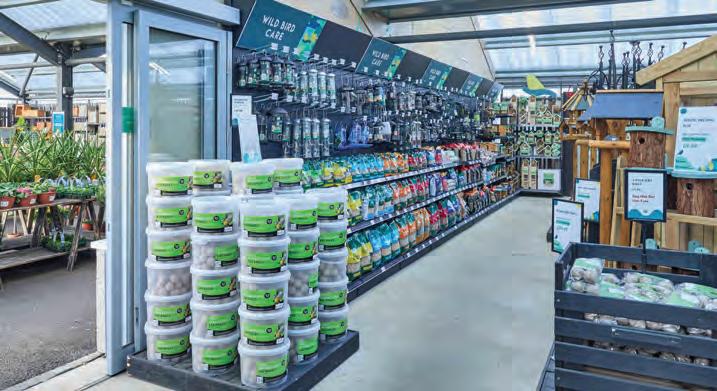


Lawton is passionate about sustainability and community engagement. “We serve as champions of British horticulture and sustainability,” he says. “We have the freedom to support local growers, stock niche or specialist plants, and adopt environmentally responsible practices more quickly than some larger retailers.”
He believes independent centres set the standard. “In a fast-changing retail environment, independent garden centres continue to lead in customer service, community engagement, and authentic horticultural expertise.”


Lawton’s recent appointment to the GCA executive board marks a new chapter in his career. “It’s a real honour,” he says. “Personally, it feels like a significant milestone in my horticultural journey and a recognition of the hard work and passion I’ve invested in this industry.”
Professionally, he sees it as a chance to make a broader impact. “I’m eager to collaborate with other industry leaders to address the challenges we face, promote innovation, and support garden centres across the UK.”
He’s particularly keen to advocate for independents. “It gives me a platform to help ensure that the industry continues to grow sustainably while staying true to its roots.”
Lawton brings a practical, hands-on approach to the GCA, with a focus on collaboration and innovation. “Strategically, I want to help the GCA embrace digital growth, boost community engagement, and promote sustainability,” he says. “I’m also passionate about supporting education to prepare the next generation of horticulturists.”
He believes there are key areas that need more attention. “We need more focus on digital innovation to reach new customers and improve the shopping experience. Sustainability is another key area—we must lead by example in reducing environmental impact.”
Education and training are also high on his agenda. “Investing in education is vital to attract and develop fresh talent for the future of the industry.”
Looking ahead, Lawton hopes to leave a legacy of positive change. “At Moss & Moor, I want to be remembered for building a welcoming, inspiring garden centre that truly connects with its community and supports sustainable growth.”
Within the GCA, his ambitions are equally clear. “I hope to help the industry innovate, embrace new challenges, and nurture the next generation of leaders.”

The 100 most influential members of the garden retail industry has been announced at the Garden Centre Conference and Expo after a full day of informative, educational and inspirational seminar sessions in a fantastic venue in St Paul’s, London.
The GCR100 highlights those who have made a significant impact across garden centre operations, horticulture, sustainability, marketing, and customer experience. From seasoned executives to emerging talent, the list reflects the diversity and dynamism of the industry today.
The GCR100 is more than just a ranking, it’s a celebration of leadership, innovation, and influence. Whether through pioneering new retail formats, driving environmental initiatives, or elevating the customer journey, each member of the GCR100 has demonstrated a commitment to excellence and progress.










“We’re thrilled to be launching the GCR100 at this year’s conference,” said Joe Wilkinson, head of content at Garden Centre Retail magazine. “It’s a chance to spotlight the people who are not just keeping the industry moving - but actively pushing it forward.
“The people selected for the GCR100 are moving the boundaries of garden retail, whether that’s with retail excellence, fantastic staff wellbeing initiatives, sustainability pushes or promoting the industry in the eyes of the public.
“We’re proud to be working within this sector, and highlighting these 100 inspirational people is our way of showing this.”
Garden Centre Retail will be working to feature a selection of the new GCR100 winners over the next year, continuing to showcase the way they are keeping the industry at the forefront of retail. We’ll also be looking for more inspirational stories from the sector ahead of a new announcement in 2026.





















































































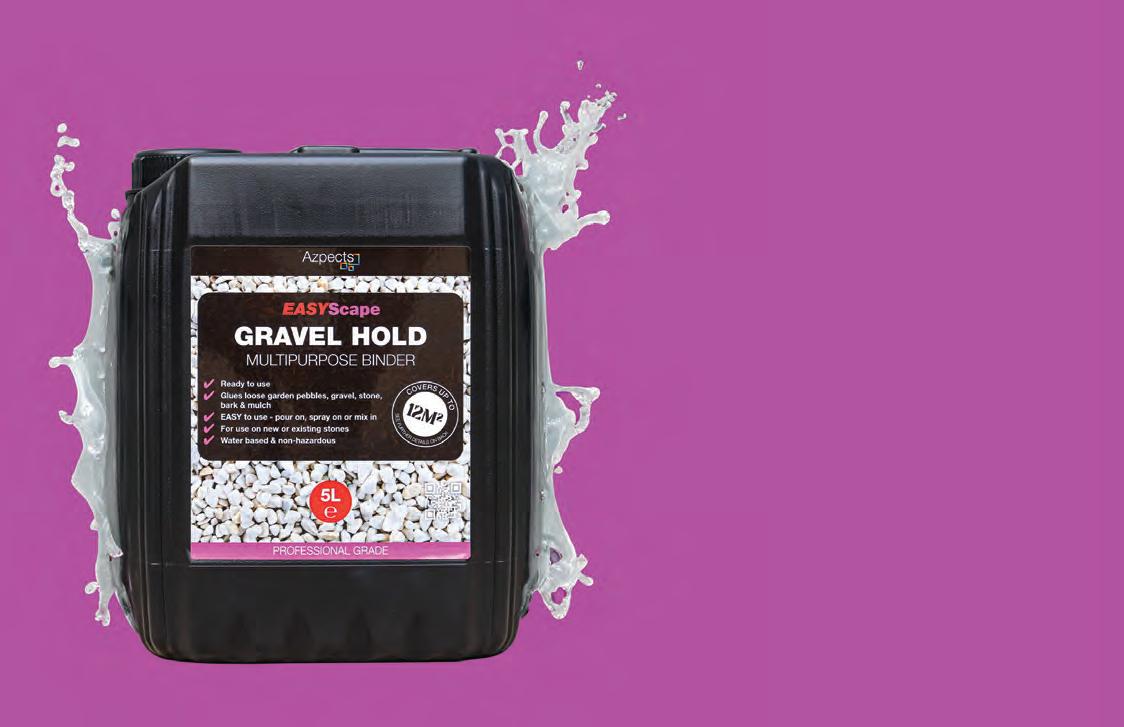

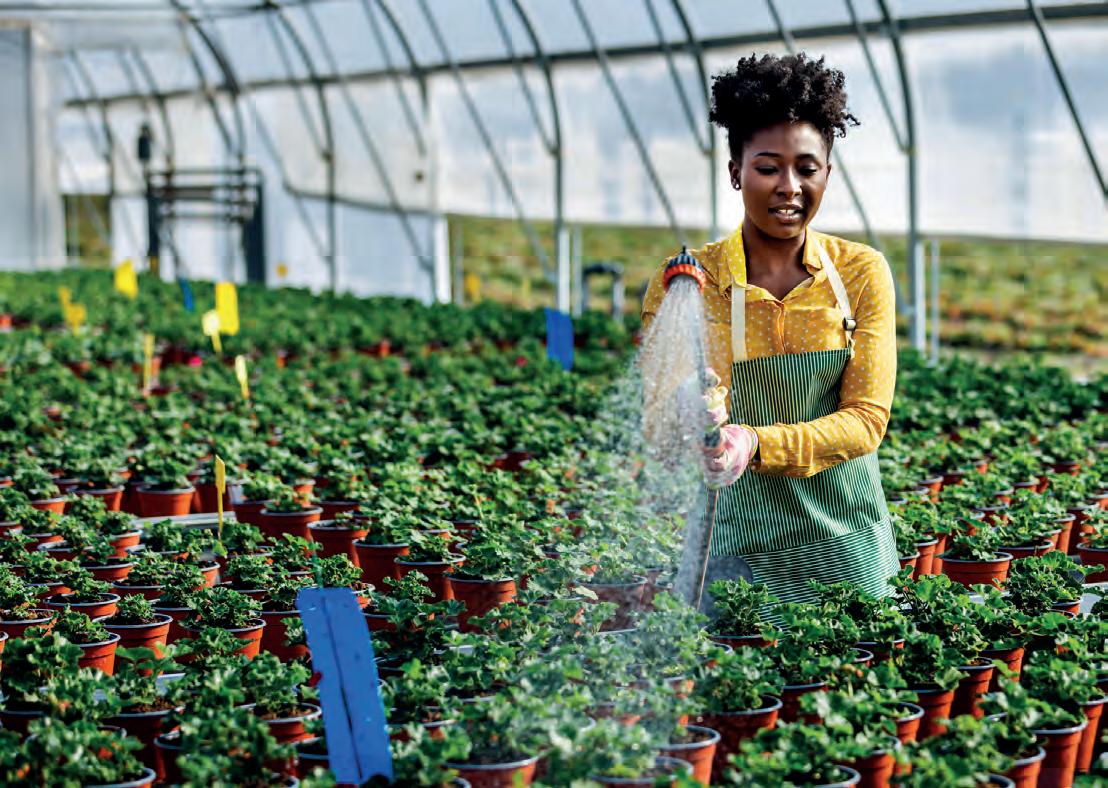



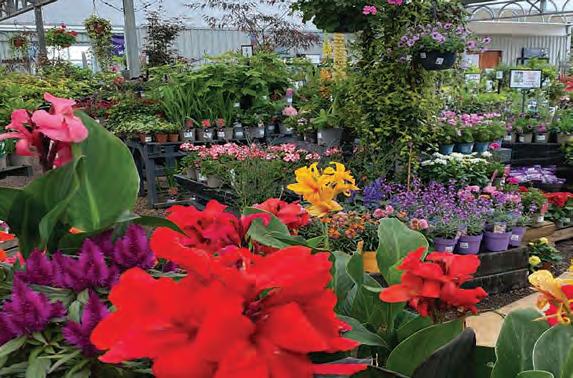


In the garden retail industry, buying British isn’t just about ticking a box—it’s becoming a key part of the business strategy. With tighter supply chains and customers increasingly interested in quality, provenance, and sustainability, sourcing plants, tools, and products from UK suppliers makes good sense. It’s about offering something trustworthy and local, supporting British growers and manufacturers, and building resilience against the ups and downs of international trade. For garden retailers, embracing British products can strengthen relationships with customers who value homegrown credentials while helping to safeguard the future of the industry as a whole. We spoke to key figures in the industry to explore the current landscape of buying British, highlighting successes, hurdles, and strategies garden centres use to champion UK-grown and made products.
The demand for locally sourced, British-grown plants and garden products is rising among both retailers and consumers. Such credentials assure retailers and consumers of product quality, authenticity, and environmental responsibility, key selling points in the current retail climate.
Adrian Williams, director at Equigrow, D. Williams, and Willen Biogas, highlighted the tension between loyalty to British products and price sensitivity: “People are very passionate about buying British and staying loyal; however, most buyers are ultimately price focused. Sadly,
if foreign (and often substandard) products are cheaper, even though the quality is not the same, people will be swayed to choose those.” This price sensitivity underlines an ongoing tension, as while consumers express values aligned with buying local, price remains a predominant factor
in purchase decisions.
Echoing this sentiment, Jill Nicholson, owner of Gordale Garden Centre , said: “We haven’t noticed any significant change. Price and quality remain the main drivers of purchase. We don’t see many customers actively looking for Britishgrown products, although we do consider it an important feature of our selection. Signage such as ‘grown locally’ tends to resonate more than ‘UK-grown’. People seem keener on local food like honey, jams, and marmalades than they are on British plants. Perhaps as the younger generation grows into garden centre shoppers, attitudes will shift.”
From a supplier perspective, heritage and home-grown brands are seeing strong interest.
Angharad James, brand manager for Baby Bio and Maxicrop at SBM Life Science, commented: “We’ve seen both retailers and consumers placing more value on heritage and home-grown products, with British brands enjoying a real resurgence. Baby Bio and Maxicrop have been trusted names in British homes and gardens for decades, and our iconic bottles are instantly recognisable on shelves. That heritage gives retailers and customers confidence, both in knowing they’re choosing brands with deep roots in the UK gardening world and that the products provide proven results.”
Traceability and sustainability also go hand in hand in demonstrating the value of British products. Equigrow’s approach sets a standard: “Our products either have a PAS100 accreditation, or we test at an independent laboratory to ensure they meet the criteria, says Adrian “All our product ingredients are locally sourced and processed on our farm in Enfield. We try our hardest to use only UK suppliers in our supply chain.”
Marketing British provenance is a shared priority amongst garden centres. Adrian explains how Equigrow supports retail customers: “Our product packaging, marketing messaging and point of sale signage states that we are a British company supporting British products... ultimately, if the retailing garden centre wants to stock a range of products from across the world, which is their prerogative.”
This balance between supplier support and retailers’ autonomy is important in a diverse marketplace. Colin Barrie, managing director of Caulders Garden Centres, echoes this ethos from a retailer perspective: “Customers are more aware of ‘British Made’ and ‘British Grown’ than ever before. Caulders try to respond by focusing on locally made and locally grown products.” Barrie highlights a conscious sourcing shift toward local products over imports.
“Caulders now source 85%+ of our plant stock within the UK. We take the same tack with our gift lines, buying close to home, supporting companies like Scottish Fine Soaps and Arran Aromatics.”
Caulders also promotes “Locally Made” and “Locally Grown” as core values, summed up by their motto “less miles, more smiles!”, and it’s this approach that fosters consumer loyalty rooted in regional pride and sustainable economics.
At Fakenham Garden Centre, general manager Nick Haydon also has observed a shift in consumer attitudes: “There’s a growing appreciation for the quality, provenance, and sustainability of UK-sourced goods, especially among younger families and eco-conscious gardeners, he said.
“Our range includes herbaceous perennials and bedding plants grown locally in East Anglia, alongside British-made garden accessories and cafe products like jams and chutneys made nearby. Our marketing involves clear point-of-sale communication to inform customers and reinforce the British credentials of products.”
Jill at Gordale reflects: “Much of the UK stock comes with logos already, and we’ll use point of sale for locally grown bedding. But in core ranges like Clematis or Conifers, it all blends. This is one area where UK horticulture could really make a difference, by pulling together a coherent ‘brand’ for UK-grown plants, not only to promote within the UK but to shout about quality abroad.”
Suppliers are also investing heavily in ways to market British provenance effectively. Taylors Bulbs, the UK’s leading supplier of bulbs to garden centres, highlighted how a combination of heritage, design expertise, and local production helps reinforce trust with retailers and consumers alike. Ian Clark, national accounts manager, explains: “We have seen plenty of demand during 2025. As well as growing a wide range of Narcissus at our farm in Holbeach, we also design and pack all our products at our Lincolnshire base.
“Our British-grown bulbs are in strong demand, and because we design and pack


everything here in Lincolnshire, they’re tailored to UK gardeners. Our Chelsea Flower Show heritage and Royal Warrant also resonate strongly with customers and influence buying decisions. Our UKbased sales team are all employed by us and they are on hand to support our retailers.
“We work hard to support our stockists with our digital marketing; in 2025, we have partnered with the most well-known and loved British gardener, Alan Titchmarsh, for his YouTube channel. We also help our stockists with their digital marketing, such as a calendar of social media posts and supporting images and POS.”
Like Taylors, SBM Life Science helps retailers tell the story, Angharad explained: “We provide POS, digital assets and seasonal campaign support, as well as wider PR and influencer activity. With Baby Bio and Maxicrop, garden centres can tell a story of British heritage, trust and performance that appeals to loyal and new generations of gardeners.”
Maintaining a reliable supply of British products is not without its challenges, as Adrian at Equigrow points out: “Poor government support is a serious issue. The hikes in wages and other associated costs make it increasingly difficult to stay financially competitive in our nation’s marketplace. Rising costs and regulatory hurdles can undermine the viability of British producers, threatening supply chain consistency.”
Helen McDonald, director at Merryhatton Garden Centre, also spoke of how Brexit-related customs checks have affected supply reliability. “Our plants arriving from Europe have had to go through tighter controls, delaying arrival and sometimes reducing plant quality. This has sometimes led us to choose UK suppliers instead. We have had challenges with specific species such as cacti, succulents, and carnivorous plants, which were previously sourced from the EU but are expensive to produce locally due to climate constraints.”
For Gordale , the reality is more pragmatic, as Jill explains: “A lot of stock is sourced through major importers, like Christmas ranges, for example. We work with excellent UK growers, some very local, but for us, quality comes first, location second. Brexit has caused challenges, but European suppliers can still offer a quality, price and volume balance that isn’t always achievable within the UK.”
Despite higher costs, the advantages of local sourcing extend beyond economics with many sustainability benefits: “Minimising transport distances reduces our emissions, and we also support regional ecosystems,” said Helen.
“Our centre invests in energy-efficient infrastructure, solar panels, ground-source heat pumps, and comprehensive recycling. The centre’s cafe also sources local East Lothian produce, reinforcing the commitment to environmentally responsible practices.”
While many retailers face availability pressures, heritage brands bring stability.
Angharad added, “Like many businesses, we’ve navigated global supply chain pressures, but heritage loyalty helps us plan. Baby Bio and Maxicrop remain consistently available to retail partners thanks to that reliability.”
At British Garden Centres, group nurseries manager Scott Morahan highlighted production
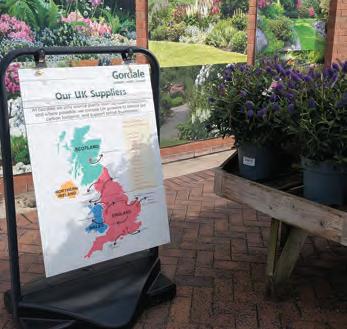
strategies linked to sustainability and local supply: “Imported stock is no longer as cheap as it once was, with transport and phytosanitary costs impacting prices,” said Scott. “It makes sense for plants to travel less distance to stores, hence investing in our own nurseries.
“In 2026, BGC plans to grow and produce around 1 million plants, planters, and baskets across its nurseries. We will also be using local raw materials, such as compost from Scotland and pots made in the West Midlands, with about 75% of young plants sourced from UK propagators to reduce environmental impact and support the domestic industry.”
Clear provenance is key to building consumer trust with the consumer as Helen explains, “We place considerable emphasis in our marketing on showing locally grown British plants with clear messaging in-store and online. Bedding plants are described as ‘Scottish grown (grown in Perth)’, alpines from Gedney in Lincolnshire, climbers from the Cotswolds, and trees from Hereford. Our website further educates customers about sourcing and the benefits of British-grown stock.
“Our point-of-sale extends beyond plants to food offerings in the garden centre café, reinforcing a comprehensive British identity. Holiday loyalty schemes and email communications provide opportunities to spotlight British products further.” Helen continues.
Heritage and traceability are also central to SBM Life Science. “Transparency is key. Baby Bio and Maxicrop are backed by decades of UK research, robust quality control and clear labelling. Both brands are part of Britain’s gardening DNA, Baby Bio since the 1950s and Maxicrop since the 1960s. Their history, combined with modern innovation, keeps them iconic and relevant,” said Angharad.
Provenance is equally central for smaller, mission-led suppliers. Dr Emily Attlee, cofounder of Seedball, tells us: “When we started Seedball, our goal was simple – to make it easier for everyone to grow native wildflowers and support wildlife. What’s been really encouraging in recent years, and especially moving into 2025, is seeing that both retailers and consumers are increasingly seeking out British-grown and British-made products. There’s a real appetite for knowing where things come from, and we’ve always been transparent about that.
We’re incredibly proud that everything we do is 100% UK-made and manufactured from our base in North London. Even our tin

We’re committed to remaining authentically British in everything we do.
packaging has a story – it’s produced locally by the last tin can maker in London, a factory partly powered by solar panels. That traceability, from our seed mixes through to our packaging, means retailers can share a clear sustainability story with customers.
For us, keeping production close to home is about staying true to our roots, supporting local


makers, and ensuring every product helps both people and nature thrive. Of course, producing everything in the UK means we must navigate seasonal seed supply challenges, but we’re committed to remaining authentically British in everything we do.”
Neil Grant, managing director of Ferndale Garden Centre, offers another perspective: “I don’t think the vast majority of customers even think about where their plants come from. They probably assume they are grown just down the road.”
Ferndale sources over 90% of hardy stock from UK growers but imports 99% of houseplants from Holland. “Inflation has evened out costs between the UK and imports but raises concerns about industry inefficiencies. Nurseries aren’t considering ways to make plants more costeffective, such as changing pot sizes or combining deliveries effectively. We are starting to discuss these issues through the HTA Retail Committee.”
At Gordale , sustainability is core but guided by pragmatism. Jill explained: “We are a green industry and don’t want to do more harm than good, but running a business requires balance. Peat-free compost is a good example; we are almost entirely peat-free, but we still offer a single full-peat multi-purpose compost because some customers expect that choice. Until the law changes, it’s not our place to force their hand. Our job is to provide the best options available, sustainably, while satisfying demand.”
As garden retail navigates shifting costs, supply pressures and evolving customer expectations, one thing is clear: by backing British-grown and British-made, the industry is not only supporting local makers and growers but also strengthening its own roots for a more resilient future.




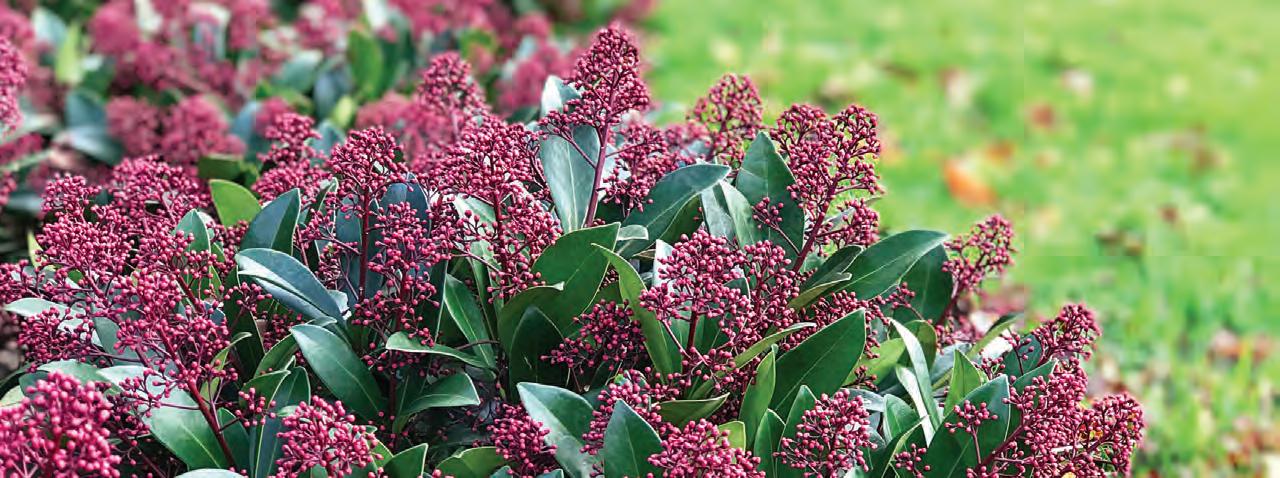
Garden Centre Retail explores the plants commercially available that can add the pop of colour to your customer’s gardens in January.
January is often perceived as a quiet month in the gardening calendar. A time when the vibrancy of spring and summer feels far away, and the landscape lies dormant under grey skies. For many customers, the garden becomes an afterthought during winter, with little incentive to visit garden centres. Yet this period holds untapped potential. With the right plant selection and merchandising, garden centres can transform the narrative around winter gardening, offering inspiration, colour, and sensory delight when it’s needed most.
Winter interest isn’t just about aesthetics— it’s about creating emotional connections. The sight of a snowdrop pushing through frost, the scent of Sarcococca near a doorway, or the architectural drama of Mahonia in bloom can lift spirits and spark curiosity. These moments of beauty are powerful tools for engagement. By showcasing plants that thrive in January, garden centres can encourage customers to see their outdoor spaces as year-round sanctuaries. This not only drives footfall during slower months but also builds loyalty and trust, positioning your centre as a source of expertise and seasonal inspiration.
From flowering favourites like hellebores and cyclamen to structural standouts like dogwood and evergreen ferns, each plant offers something unique. Whether you’re planning a winter-themed display or looking to refresh your plant offering, these selections will help you turn January into a season of opportunity.
Hellebores are a winter staple, blooming from late December through early spring. Their nodding flowers come in a palette of whites, pinks, purples, and even greens, often with speckled or marbled petals. These perennials thrive in shady spots, making them ideal for woodland-style planting or under deciduous trees. For garden centres, hellebores offer strong visual appeal in pots and containers, and their long flowering period makes them a reliable winter seller. Highlight varieties like Helleborus niger and Helleborus orientalis, and consider pairing them with mossy underplanting or bark mulch for a naturalistic display.


Low-growing and evergreen, Erica carnea is a versatile plant that brings colour to borders, containers, and rock gardens. Flowering from late autumn into spring, its blooms range from white to deep magenta. Heathers are particularly effective when planted en masse, creating carpets of colour that contrast beautifully with winter skies. Their hardiness and low maintenance make them attractive to novice gardeners, while their nectar-rich flowers support pollinators during lean months. Garden centres can boost sales by offering mixed trays or themed displays with companion plants like dwarf conifers or ornamental grasses.

Few plants evoke the spirit of winter like snowdrops. These delicate white flowers often bloom through frost and snow, symbolising hope and renewal. Galanthus nivalis is the most common species, but cultivars like G. elwesii and G. ‘Magnet’ offer larger blooms and longer flowering periods. Snowdrops naturalise well under trees, in lawns, or along pathways, and they’re perfect for impulse buys when sold in pots or as bulbs. Garden centres can create seasonal theatre by displaying snowdrops in rustic containers or alongside winter-themed accessories.
Compact and hardy, Cyclamen coum produces jewel-like blooms in magenta, pink, or white, often with attractively marbled foliage. Flowering from January to March, it’s ideal for underplanting shrubs or trees, and thrives in well-drained soil. Cyclamen are excellent for container sales, especially when grouped with moss, bark, or miniature evergreens. Their small size makes them perfect for windowsills or doorstep displays, and they appeal to customers looking for subtle, elegant winter colour.
A bold, architectural shrub, Mahonia x media offers spiky evergreen foliage and fragrant yellow flowers that bloom in winter. Varieties like ‘Charity’ and ‘Winter Sun’ are particularly popular, attracting pollinators and adding height to winter borders. Mahonia’s dramatic form makes it a standout in garden centre displays, and its scent adds sensory appeal. Promote it as a structural plant that provides year-round interest, and consider pairing it with lower-growing companions like ferns or hellebores.
While dogwoods are known for their summer foliage, it’s their bare winter stems that steal the show. Varieties like Cornus alba ‘Sibirica’ and Cornus sanguinea ‘Midwinter Fire’ offer vivid red, orange, or yellow stems that glow against grey skies. Best planted in groups for maximum impact, dogwoods are ideal for winter borders or as backdrops to flowering plants. Garden centres can showcase them in large pots or grouped displays, and offer pruning advice to encourage vibrant new growth.






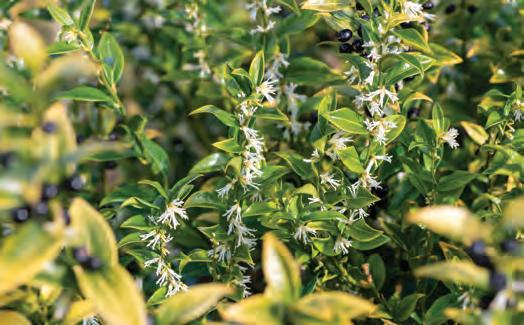
January may not be the busiest month in the gardening calendar, but it offers a unique opportunity for garden centres to stand out. By embracing winter colour and structure, retailers can challenge the perception that gardens are dormant and uninspiring during colder months. The plants highlighted in this article—ranging from the delicate charm of snowdrops to the bold presence of Mahonia—demonstrate that beauty and interest are not confined to spring and summer. These selections offer more than just visual appeal; they bring fragrance, texture, and ecological value, supporting pollinators and providing year-round garden interest. For garden centres, this means the chance to create immersive, educational displays that not only drive sales but also deepen customer engagement.
Evergreen ferns provide lush texture and structure throughout winter. Varieties like Polystichum setiferum and Dryopteris erythrosora retain their fronds in cold weather, adding a woodland feel to shady areas. Ferns are increasingly popular with customers seeking lowmaintenance, wildlife-friendly planting. Garden centres can use them to soften hard landscaping in displays, and pair them with hellebores, cyclamen, or snowdrops for a layered look.
A compact evergreen shrub, Skimmia japonica offers glossy leaves, red buds or berries, and sometimes fragrant flowers. Varieties like ‘Rubella’ and ‘Reevesiana’ are particularly popular in winter displays. Skimmia thrives in partial shade and acidic soil, making it a good candidate for container planting. Its festive appearance makes it a strong seller in the run-up to Christmas and into January. Garden centres can boost appeal by offering it in decorative pots or as part of mixed winter arrangements.
Small but mighty, Sarcococca is prized for its highly fragrant white flowers that bloom in midwinter. Its glossy evergreen leaves and compact habit make it ideal for shady spots near paths or doorways. Varieties like Sarcococca confusa and S. hookeriana are reliable performers, and their scent is a powerful selling point. Garden centres can use signage to highlight fragrance, and position plants near entrances to create a memorable customer experience.
To maximise the potential of the January planting, garden centres should consider how these plants are presented and promoted. Themed displays, bundled planting combinations, and informative signage can help customers envision how these plants will transform their own gardens. Staff training is also key—equipping teams with knowledge about winter care, companion planting, and design tips will build trust and encourage repeat visits. Workshops, social media content, and newsletters can further amplify the message that winter gardening is both rewarding and accessible. Ultimately, by positioning January as a season of opportunity rather than inactivity, garden centres can inspire customers to invest in their gardens year-round—and ensure that their business thrives even in the quietest months.

